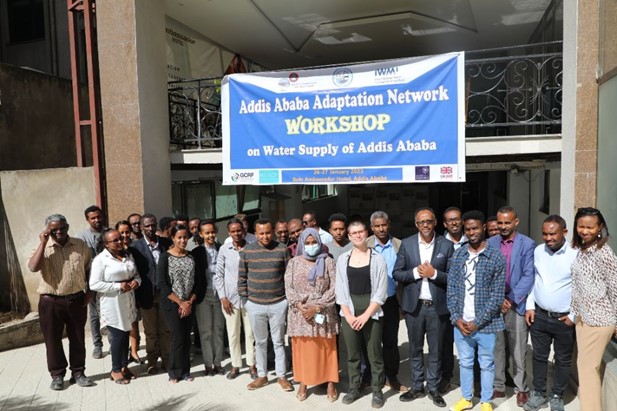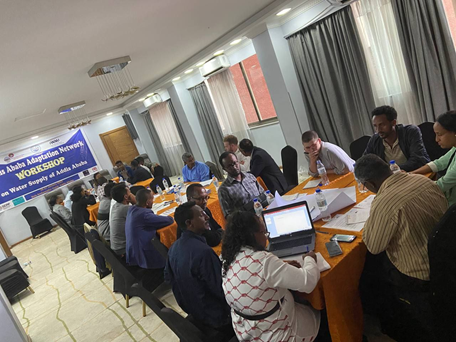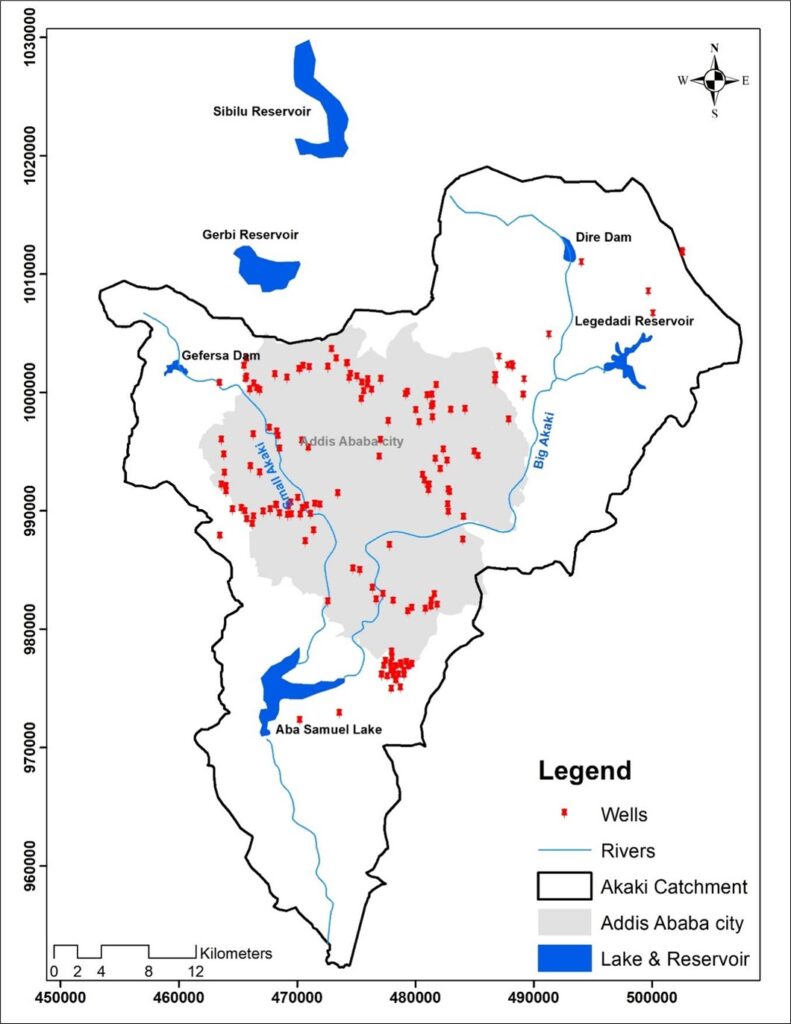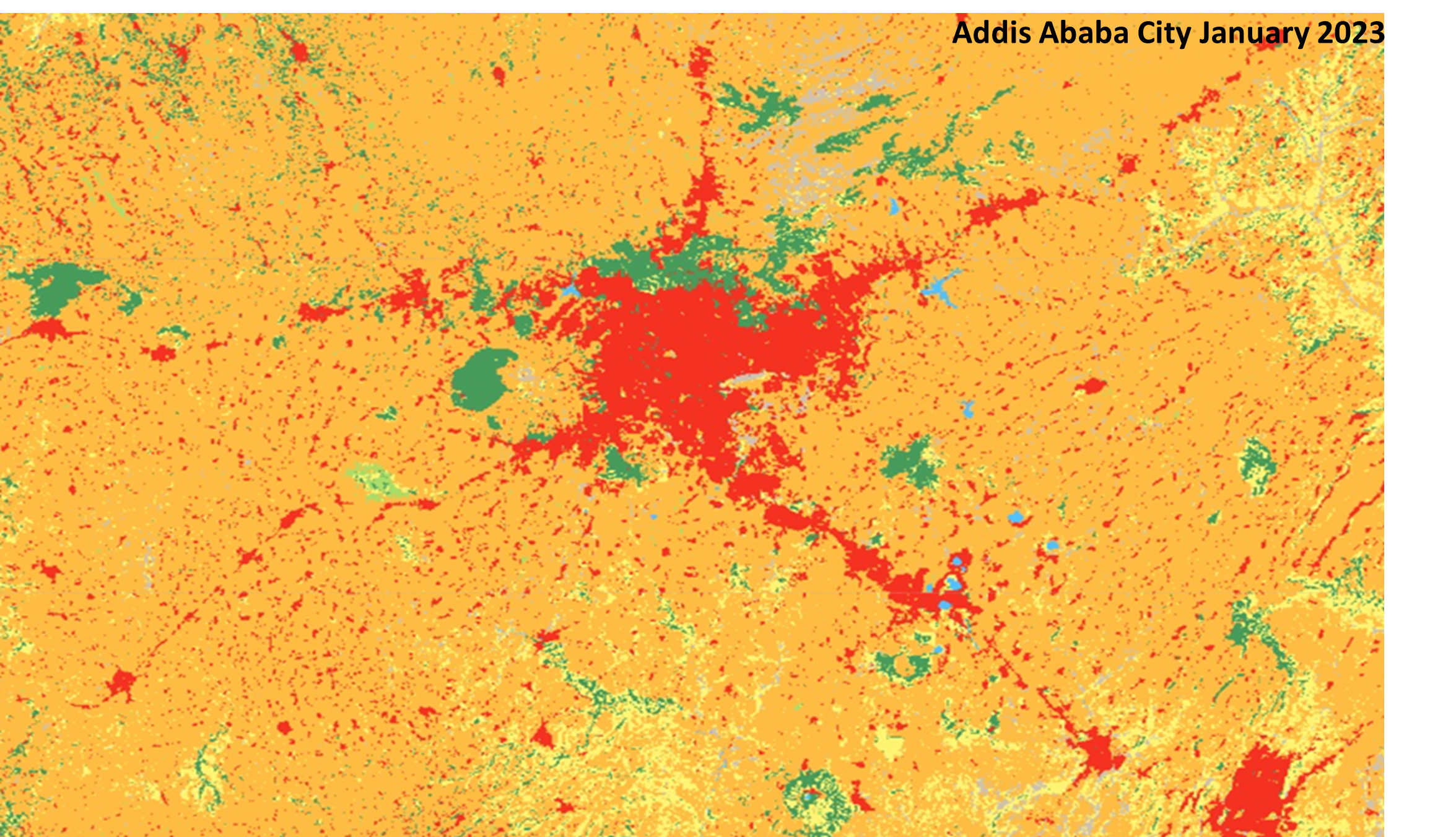Dr Behailu Birhanu (Addis Ababa University), Prof Seifu Kebede (University of KwaZulu-Natal), Prof Katrina Charles (University of Oxford), Dr Tena Alamirew (Water and Land Resources Centre), Dr Gete Zeleke (Water and Land Resources Centre), Dr Alemseged Tamiru Haile (IWMI), Dr Meron Teferi Taye (IWMI), Henok Manaye (AAWSA), Elliot Rooney (Sustainable Development Hub), Xanthe Polaine (Sustainable Development Hub)
Major water supply challenges
As one of Africa’s fastest growing cities, Addis Ababa’s demand for water has sky rocketed over recent decades due to population growth, rural to urban migration, and growing water demand from industry. To meet the growing water needs, water supply has been developed in a largely unplanned and uncoordinated way, placing increasing pressure over water resources.
While the city relied on springs and shallow wells for most of the 20th century, over 60% of its water now comes from groundwater (mostly deep wells) and the rest from surface water from the Awash River basin tributaries. However, current water resources are unable to meet the city’s growing demand: it is estimated that existing water supply only meets about 60% of the city’s water demand, leaving much of the population under-served.
The following have contributed to Addis Ababa’s water supply challenges:
- The storage capacity of surface water reservoirs has been dwindling due to land use and climate changes.
- Groundwater abstraction has largely been led without proper monitoring of the resource leading to water table declines. Recently, the government started promoting self-supply, encouraging private investors to drill wells to supply their needs. Consequently, the number of private wells competing with the community has significantly increased. Many of these private suppliers also sell water to water users, despite this being proscribed by law. In addition to the stress on the groundwater resource, this may eventually increase the gap of inequality in water access if done without proper regulatory measures.
- Urban pollution and industrial effluents have increased pollution levels in both surface and groundwater. The recharge zones which would have replenished the groundwater reserve have been minimized by urbanization. There is no recharge zone protection effort.
- The water supply distribution networks are ageing and hence in many parts unfit for purpose, leading to up to 40% water loss across the whole network.


What measures have been taken?
To address Addis Ababa’s water crisis the government has sought to increase the storage and treatment plant capacity of dams, to construct additional surface water supply sources, and to drill additional deep wells. AAWSA has also undertaken some actions, including: replacing old pipes, rehabilitation of old reservoirs and booster stations, implementing Supervisory Control and Data Acquisition (SCADA) system to monitoring the water distribution network, protecting surface reservoirs through reforestation of their catchment areas, providing sewer treated water as alternative water sources for construction and greenery, increasing staff capacity through on the job training on NRW reduction supported by international partners, and awareness creation of customers on water usage.
However, these efforts have largely been insufficient, and a more wholistic approach is needed to address the city’s water crisis.

Can we do better?
Business-as-usual will further constrain water availability, restricting economic and health development gains, and exacerbating inequalities between those who can afford coping mechanisms and those who can’t.
Our research points to the following interventions to improve Addis Ababa’s city water security.
1 – Improved groundwater management
Addis Ababa gets water from both surface water and groundwater supply sources. However, what lacks is a mechanism to use the resources in a coordinated manner, whereby groundwater can provide a buffer in drought years, compensating for low surface water supplies. This requires new physical (engineering infrastructure), operational (optimization models) and institutional arrangements.
Addis Ababa is frequently flooded during wet seasons (July, August, and September). With proper management, floods could be converted into opportunity through Managed Aquifer Recharge (MAR) schemes. Proper land use planning helps to protect potential groundwater recharge zones from pollution threats and land use and land cover changes.
2. Regulations and enforcing mechanisms
Recently, the government started promoting decentralized water use through groundwater self-supply (encouraging investors to drill their wells). Such schemes create a chance for the government to share the elevated water supply development costs with private investors. It also helps to minimize the loss of water due to old water supply distribution networks.
However, to ensure a fair distribution of the water resource and its sustainability, there needs to be a legal framework and binding regulations in place to guide groundwater abstraction from industry and private investors.
3 – Demand management and reducing leakage
AAWSA has ongoing awareness-raising activities through public lectures, engaging students, working with schools, and using the broadcast media. These activities are designed to encourage efficient water usage through water-saving measures, such as using a bucket instead of running the faucet, and distributing water-saving household goods and appliances, especially to hotels.
All types of urban water users use clean water that requires a substantial amount of financial resources to produce drinking water. To avoid unnecessary water competition, tariff schemes should be discouraged for water uses other than household purposes. Treated wastewater can be a better alternative water supply source option for non-domestic water users (gardening, firefighters, car wash, and construction).
4- Integrated land use and development plan
Wells are being drilled and surface water reservoirs planned outside of the city’s administrative boundary – where there is limited planning and monitoring.
An integrated land use development plan should be put in place, considering Addis Ababa’s administrative boundary and its surrounding area as a single planning unit. The plan should discourage further industrial expansions within and nearby Addis Ababa as an instrument to control additional pollution sources.
What’s next?
As part of our work, we developed the first of its kind dynamic water allocation model integrating surface and groundwater for the upper Awash sub-basin, where Addis Ababa is located. The outputs can support more comprehensive water management decision-making for Addis Ababa city. In addition, the methodology can be relevant to other basins. Indeed, this work is contributing to two other ongoing water allocation models, for the Abay and Rift Valley Lake basins, which currently only focus on surface water supply sources.

